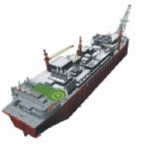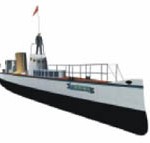The Marine School of South Shields, formally South Tyneside College, previously The South Shields Marine & Technical College (and …before that – The Marine School of South Shields)
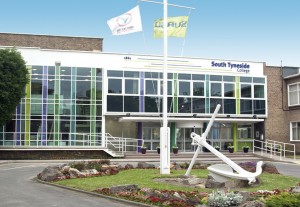
The college recently celebrated it’s 150th anniversary. It was quite unique in its day being one of the first institutions to provide education for seafarers in order that they could better deal with the rigours of the sea; providing them with training in navigation and engineering to help prevent tragedy and loss of life that was so prevalent at the time the school opened in 1861. It is a brilliant achievement that, in 2012 the college offers some of the most modern and comprehensive marine simulation technology in the world. The college combines a unique blend of traditional experience and forward vision.
It is the largest UK centre for marine education, with a full range of courses in the three major disciplines
Deck :: Marine Engineering :: Marine Communications and Control
On Friday 20th May 2013 members of the Tyne Area Shipping Club were guests of the Marine Simulation Department. We received a most comprehensive introduction to the world of high-end technology the art of simulation and their use of in-house mathematical -3D modelling techniques.
With many of us being ex deck and engineering officers, it was a most wonderful experience to see at first hand just how far the shipping industry has advanced technologically in just a few short years. We should like to thank John, Paul and Chris and other members of staff, for making the visit such a memorable one. We thank them also for information and photographs that will allow me to show you something of what we learnt and saw during our visit.

The Marine Simulation Department boasts a total of thirteen simulated bridges in three locations. Five Kongsberg-Norcontrol (KMSS) Polaris-type bridges are housed at the Marine Simulation Centre. There is also a full mission engine simulator that is capable of being connected to a full mission bridge simulator for combined deck and engine room courses. This Centre also acts as the administrative base for the Department.
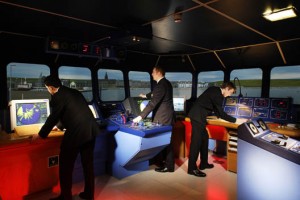
The Port Operations Unit contains a further four KMSS bridges, as well as, a comprehensive VTMIS simulator. The Radar Station is home to a four bridge Transas Simulator as well as six ‘live’ ARPA (Automatic Radar Plotting Aid) systems and a Navigation Aids Laboratory.
Marine Simulation Centre Bridges
There are five simulated navigational bridges capable of being used together or individually. All bridges have a visual display with high quality day/night photo- textured scenes. One bridge has a 135º projected horizontal field of view on either side of the bow and can be used facing astern for supply vessel operations.
Vessel Traffic Services (VTS)
The Vessel Traffic Service simulator system consists of three shore based control stations with data input from radar scanner locations within the exercise area. The control stations use the same Norcontrol IT ‘VOC5060’ software that is used by actual VTS installations. There can be full interaction with any combination of the five simulation bridges plus any additional targets under the instructor’s control. Digital audio communications are used, capable of full recording and synchronisation within the exercise scenario – for debrief purposes.
Cargo Handling Simulation
This workstation based system consists of up to eleven student workstations capable of performing the complete cargo handling operations of a real ship’s cargo plant. There are ship models representing oil tankers (VLCC & Product), a chemical tanker and liquid gas (semi-pressure & Moss-type) carriers.
Full Mission Engine Room Simulator
This simulator is a generic reproduction of the control and engine room of a VLCC powered by a MAN B&W slow speed diesel engine. The control room contains consoles which house main engine controls, plant alarm, generator control, pump and compressor controls and oil fired boiler control panels.
The realism is further enhanced by an engine room located on two levels, with full sound and environmental conditions.

Engine Workstation Simulator
The individual workstation units are provided with various machinery models.
- Slow speed engine (MAN B&W 5LMC90)
- Combustion engineering boiler (CE V2 M9) and Stal steam turbine, powering VLCC
- Twin medium speed engine (Pielstick 10 PC 4.2) powering a ferry/general cargo vessel
- Diesel electric system, (Cegelec Synchro-converter) – powering a large passenger vessel
- Gas Turbine System (G.E. LM2500)
Research & Development
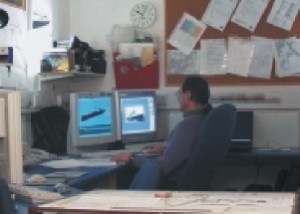
The in-house research and development team, which includes Marine and IT professionals, can provide a range of customer specific 3D visual geographical database areas as well as realistic ship models. These models are then used to deliver training scenarios or are integral to feasibility studies.
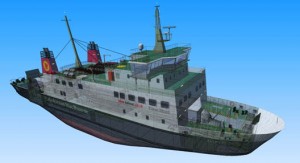
Port Operations Unit
Port operations provide cutting edge training facilities. A single simulator system is based in twinned buildings; one location housing four KMSS ‘Desktop’ bridges, the other is fitted with a fully integrated VTMIS suite. This unique development has been created specifically to service the full range of IALA approved VTS courses available at South Tyneside College.
Vessel Traffic Services (VTMIS)
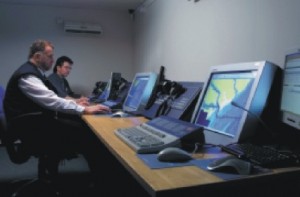
The simulator system consists of three VTS Operator control stations and a VTS Supervisor station using the same Norcontrol IT VOC5060 software that is used by actual Norcontrol VTMIS installations. There are also five ‘scenario stations’, which provide the communication interaction to which VTS operators will need to respond. Each of these nine operators and up to two Instructors can observe a birds-eye-view of the VTS area of responsibility; they each also have access to a shipping movements database (Norcontrol IT VDB6070).
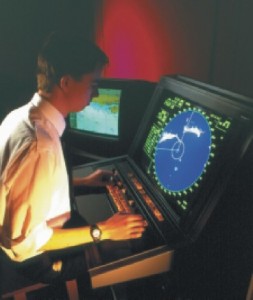
Marine Consultancy
The Marine Simulation Department can provide a professional service to the marine industry; this can be provided by staff within the Department based on their practical experience and their academic ability. The simulation facilities can also be used to provide operational evidence and demonstration.
Provision includes:
- Safety Consultancy including Risk Analysis, Safety Assessment,
- Bridge Team Management Audits
- Port Operation Feasibility Studies
- Shore Based (VTS) Consultancy
MCA Approval
The Department is committed to maintaining the highest standards of training excellence. As evidence of this level of competence the Marine Simulation
Department has obtained MCA approval across its range of courses.
Quality
All courses operate under the quality control of ISO 9000:2000 with the Department having the flexibility to provide statutory courses or create courses to suit special or individual requirements.
